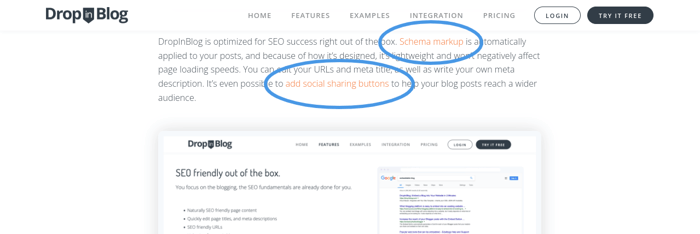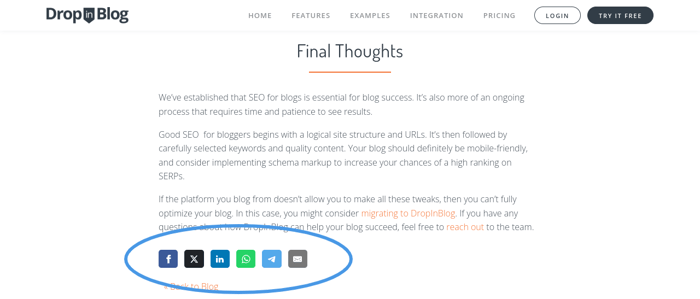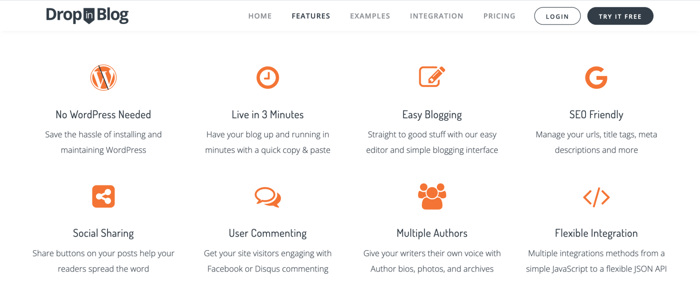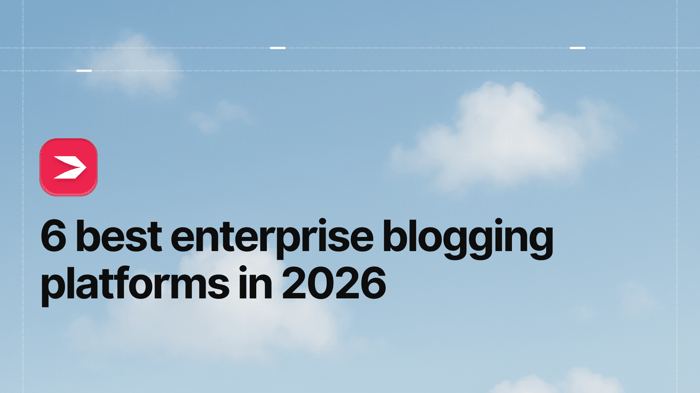Many big brands and small businesses alike engage in blogging as a major part of their marketing strategy. Ever wondered why blogging is important for SEO? There are a couple of very good reasons.
In this article, we’ll explain the factors that search engines take into account when crawling and indexing your pages. But, we’ll also explore how blogging plays a part in this process and why it’s so helpful for SEO.
Table of Contents
What Is SEO?
SEO, also known as search engine optimization, is the process of improving the content and structure of a website to help search engines crawl and index it. Well-optimized websites will attract organic traffic, which often leads to an increase in conversion rates. SEO also has a focus on maintaining the quality and readability of content – so you know your audience will also be happy with the improvements made.
Factors That Affect SEO
Search engines like Google consider a wide range of factors, both on-page and off-page, that impact how well a website ranks in search results.
Factors that are considered by search engines include:
- The quality, relevance, and accuracy of the content
- How recently the content was updated
- Use of keywords – do they meet search intent?
- Internal links to other pages
- Presence on social media
- User engagement metrics – things like bounce rate and click-through rate
- Site speed – slow websites produce a poor user experience
- Mobile-responsiveness
- Site security – is it HTTPS secure?
So, how does blogging help with the above ranking factors?
How Blogging Helps SEO
Keeps Your Website Fresh
A website that is active is good for SEO. That’s because search engines consider a website that is consistently providing fresh relevant content to be genuine. Also, search engine crawlers are constantly crawling the web and are likely to crawl your site more often when you publish new content. Your new content will be indexed faster, and existing content will maintain its ranking.
Make Effective Use of Keywords
Keywords are how users find the content they want via a search engine. They are also another way to help search engines understand the purpose and intent of your content and they will index your content partly on the basis of the keywords used. You can work specific keywords into your blog content, including long-tail keywords, to ensure that your blog and website in general are found by potential customers.
On a side note, another helpful thing you can do to help search engines read and process your content correctly is to apply schema markup. This is a computer language that’s very easy for search engines to read. It can also create and present your pages with rich snippets that display things like ratings, price, or stock availability.
Link Building for Success
Internal linking is a great way to indicate other pages of your site to search engines and display a sort of web of interconnection between all the pages of your site. By having many blog posts, you increase the number of internal links you can have and further develop this connection through your website.

Blog posts are also an easy way to attract backlinks from other websites. Backlinks are highly valuable for SEO because they show search engines that your site is considered reputable by others.
It’s All About People: User Engagement
Search engines consider how long users spend on your website as another indicator of the quality of both your content and the technical structure of your website. Pages with a high bounce rate indicate poor user engagement, but if your blog can keep people reading and browsing, this will increase the time spent on a page.
Having a presence on social media is also beneficial for websites. Search engines favor sites that have a presence and have built a following across different social media platforms. Blog posts with convenient social sharing buttons are an easy way to attract attention on social media and gain a loyal following.

Simple Steps To Optimize Your Blog For SEO
There are a few key steps to take in order to optimize your content for SEO. Here’s a brief rundown of the process:
- Assess what the competition is doing and what your audience wants. It’s helpful to know which keywords the competition is targeting.
- Thoroughly research your keywords.
- Develop an eye-catching title, and don’t forget a meta title.
- Write quality content that your readers want (see the first point) and ensure the posts are easily scannable with enough subheadings.
- Include internal links to other pages and blog posts.
- Write your own meta description.
- Make sure your pages are all mobile-friendly.
You can also read more about this process in our post on how to optimize posts written specifically for bloggers.
Blogging With DropInBlog for SEO
Maybe you’ve heard of DropInblog, or maybe you haven’t yet. Either way, we’ll tell you how DropInBlog can help you create SEO-friendly blog posts that help you achieve your content marketing goals.
What Is DropInBlog?

DropInBlog is a professional blogging platform that will integrate easily with a range of other platforms. Essentially, you tell it where you want the blog posts to appear on your website, and when published, they’ll appear instantly.
It incorporates a WordPress-style text editor for ease of use and automatically adopts your existing site CSS and style. You only have to focus on crafting excellent blog posts and not reformatting and designing the page every time you publish new content.
DropInBlog Features
DropInBlog is great for creating SEO-friendly content and includes a range of features that help SEO and make your blog look professional.

Some of the key DropInBlog features and functionality include the ability to:
- Optimize URLs.
- Write your own meta title and meta description.
- Develop author profiles and manage multiple authors.
- Specify target keywords.
- Add and manage a range of media including images and videos.
- Display related blog posts.
- Include social sharing buttons.
- Add a reading progress indicator.
- Insert shoppable products – for e-commerce blogs.
- Make your content AI-friendly.
- Add schema markup.
However, without a doubt, the best feature is the SEO Analyzer. No more guessing if your content is perfectly optimized – the SEO Analyzer will assess and score your content. If it doesn’t quite make the grade, you’ll receive recommendations for improvement. This type of feature is included with the platform and doesn’t cost extra. If you’re interested, you can try DropInBlog for free and test out all the features yourself.
FAQs
How do you choose the best keywords for a blog post?
There is a bit of a process for selecting keywords. Essentially it begins with understanding your audience and analyzing the metrics of your shortlisted keywords. You want to choose keywords with a low competition score but a high search volume, if possible. Find out more about how to do keyword research.
How do you optimize on-page SEO?
There are a number of steps to optimize your on-page content for SEO. It’s certainly not rocket science, and anyone can do it. It’s very important to ensure your content is unique, high-quality, and meets search intent.
Another factor that’s important is readability. Ensure your blog posts are easy to read and the page is broken up by subheadings and a few images. Then it’s also helpful to write your own meta title and meta description.
How can I measure the success of my blogging efforts?
It’s very important to monitor the progress of any changes you make. If you’re not getting the desired results, you can make some adjustments sooner rather than later. Always use an analytics tool that assesses site metrics like traffic, click-through rates, and bounce rates. You can also monitor user engagement in the form of comments, shares, and likes.
Final Thoughts
Blogging is more than just a creative outlet – it plays a significant role in SEO. Consistently produce high-quality, relevant, and optimized content, and you’ll be providing valuable information to your audience and boosting that relationship. However, you also tell search engines that your website is a valuable resource.
Regularly publishing fresh content keeps your site active and engages visitors, leading to increased traffic, improved search engine rankings, and ultimately, greater online visibility.
Blogging is the cornerstone of many digital marketing strategies. It builds solid customer relationships, positions you as an expert in your niche, and helps attract high-value organic traffic. So, whether you're a small or large business owner, blogging is a powerful and affordable SEO tool that can unlock new opportunities and achieve lasting online success.





